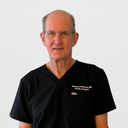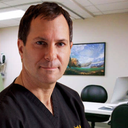The upper eyelids, eyebrows and forehead are one continuous unit. If the forehead and eyebrows sag, then the eyelids feel and look heavy. You can prove this to yourself by pushing the forehead and eyebrows downward and seeing what it does to your upper eyelids. The subconscious part of your brain is constantly trying to make it easier for the upper eyelids to function without problem. If your brain detects the excess weight of eyebrows and forehead on your eyelids, it will stimulate the forehead muscles to lift the forehead and eyebrows upward to relieve this stress. As you age and the forehead and eyebrows sags, the stimulus to lift the forehead results in wrinkling. Early in the wrinkling process, Botox or other neuromodulators will relax the muscles and soften the forehead wrinkles. The converse of relaxing these muscles is the eyebrows will sag somewhat and the upper eyelids will look and feel heavy. As the true, natural sag of the forehead and brows becomes worse, Botox treatments become less effective and the eyelids become heavier. If you are at that point, then forehead lifting is your only choice. A good way to determine how much compensation your forehead is doing to correct for forehead sagging is to stand in front of a mirror and close your eyes. With your eyes closed, the forehead muscles relax. Place your finger on one eyebrow and hold it in place, then open your eyes. Opening your eyes will cause the eyebrows to elevate to the compensated position. Release the finger and watch how high your eyebrow lifts. This difference between the fixed and released eyebrow is the amount of compensation you need to correct for with a forehead or brow lift.If you have come to the conclusion that a brow lift is in your future, then you need to consider;the height of your forehead. Most brow lift procedures will raise your hairline. If you already have a high hairline you can have a lateral brow lift, pre-trichial brow lift or direct brow excision - all of these techniques will NOT raise your hairline.If you have thinning hair at the frontal hairline, you may avoid the coronal brow lift (most effective) and consider an endoscopic brow lift.If you only need to lift the outer third of your eyebrows then a lateral brow lift is all that is needed.Types of Brow LiftsCoronal Brow lift - most effective, raises the entire forehead, elongates the forehead, can leave numbness and a scar. May contribute to some hair loss.Endoscopic Brow Lift - does many of the same things as a coronal brow lift, but less effective. scars anr less but the elongation of the forehead persists.Pre-Trichial Brow lift - very effective lifting of forehead and brows without elevating the hairline by placing the incision at the hairline. The scar may be obvious.Lateral Brow lift - will lift the lateral third of the eyebrow without elevating the hairline. Scars are well-tolerated.Direct Eye Brow excision - by removing skin at the top of the eyebrow the eyebrows are lifted but with a scar that may be visible. Simple procedure, quick recovery.If you do not need a brow lift, then the heaviness of your upper eyelids can be treated with a blepharoplasty, which is the direct removal of skin, fat and muscle from the upper eyelid. Most importantly for you is to choose the correct procedure for your problem. After you have decided which procedure is the right choice, find a board certified plastic surgeon to discuss your dry eyes and if there anything that can be done to mitigate your problem.For more information on brow lifts and/or blepharoplasties, please read my book " A More Beautiful You - Reverse aging through skin care, plastic surgery and lifestyle solutions".









